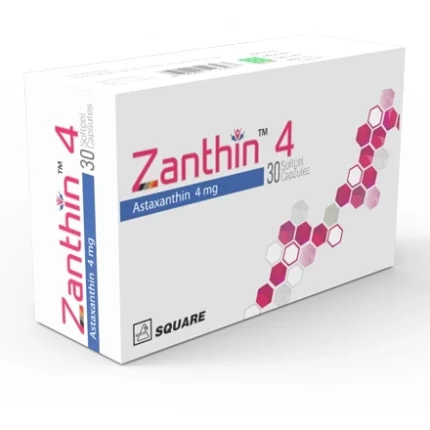Acilog Mix
550.00৳ Pcs
- Acilog Mix (rDNA) injection is used to improve glycemic control in adults and children with type 1 diabetes and in adults with type 2 diabetes.
- It contains a combination of 30% soluble Insulin Aspart and 70% Insulin Aspart Protamine.
- This insulin analog offers a rapid onset and intermediate duration of action to regulate glucose metabolism.
- Administered via subcutaneous injection, it is essential to follow medical guidance for correct dosage and administration.
 Brand
Brand
|
ACI Limited |
|---|---|
 Generics
Generics
|
Biphasic Insulin Aspart |
 Type
Type
|
SC Injection |
Indications
Acilog Mix (rDNA) Injection is used to help manage blood sugar levels in both children and adults with Type 1 diabetes, as well as adults with Type 2 diabetes mellitus.
Important: Always follow the advice of a registered healthcare professional when using this medication.
Composition
Each milliliter of the suspension contains 100 units of Insulin Aspart (rDNA), which is equivalent to 3.5 mg. The composition includes 30% soluble Insulin Aspart and 70% Insulin Aspart Protamine suspension.
Pharmacology
Acilog Mix (rDNA) combines 30% Insulin Aspart and 70% Insulin Aspart Protamine to create a human insulin analog suspension. This formulation acts as a blood glucose-lowering agent with a rapid onset and intermediate duration. Insulin Aspart is similar to regular human insulin, except for a single amino acid change at position B28 (proline replaced with aspartic acid), produced through recombinant DNA technology using Saccharomyces cerevisiae (baker’s yeast).
Insulin’s primary role is to regulate glucose metabolism. Insulin Aspart lowers blood sugar by promoting glucose uptake into muscle and fat cells, and inhibiting glucose production in the liver. It also reduces lipolysis and proteolysis, enhancing protein synthesis.
Dosage
The dosage of Insulin Aspart should be personalized according to individual needs.
- Subcutaneous Injection: It is recommended to administer insulin aspart within 5-10 minutes before starting a meal.
- Use in Pumps: Replace the insulin in the reservoir every 6 days. Change the infusion set and site every 3 days. Do not mix with other insulins or diluents when used in a pump.
- Intravenous Use: For infusion systems using polypropylene bags, insulin aspart can be used at concentrations between 0.05 U/mL and 1.0 U/mL. It remains stable in fluids like 0.9% sodium chloride.
Important: Always follow your doctor’s guidance for the correct dosage and method of administration.
Administration Guidelines
Before using Biphasic Insulin Aspart (rDNA), ensure you have the following:
- Correct insulin syringe (100 units/ml)
- Prescribed insulin type
- Ensure the vial is not expired and the flip-off cap is intact.
Follow these steps for proper administration:
- Wash your hands thoroughly.
- Shake or roll the vial 10 times to mix the insulin thoroughly.
- Inspect the vial; it should appear white and cloudy after mixing.
- Wipe the vial’s rubber stopper with an alcohol swab.
- Draw air into the syringe equal to your dose, then insert the needle into the vial and push air in.
- Turn the vial upside down and withdraw the correct dose of insulin.
- Check for air bubbles and remove them by tapping the syringe gently.
- Pinch the skin lightly, insert the needle, and slowly inject the insulin.
- Wait for 5 seconds, then remove the syringe. Do not rub the injection site.
Note: Always consult with your doctor before starting any treatment.
Drug Interactions
Several substances may affect glucose levels, requiring careful monitoring and potential dose adjustments. Some medications that can increase the risk of hypoglycemia include:
- Oral anti-diabetic drugs, pramlintide, ACE inhibitors, fluoxetine, salicylates, and certain antibiotics.
Substances that may reduce insulin’s blood glucose-lowering effect include:
- Corticosteroids, diuretics, estrogen, progestogens, and others.
Beta-blockers and alcohol can also impact insulin’s effects.
Contraindications
Biphasic Insulin Aspart (rDNA) should not be used during hypoglycemia or in patients with a known hypersensitivity to Insulin Aspart or any of its components.
Side Effects
Potential side effects include:
- Hypoglycemia
- Lipodystrophy (fat tissue changes)
- Weight gain
- Peripheral edema (swelling of the extremities)
Pregnancy and Lactation
- Pregnancy: Category B. Regular monitoring of glucose control is essential, as insulin requirements may change during pregnancy. Consult your doctor if you plan to become pregnant or are pregnant while using insulin aspart.
- Lactation: It is not confirmed whether Insulin Aspart is excreted in human milk, so adjustments to insulin doses may be required for lactating women.
Precautions and Warnings
- Blood Glucose Monitoring: Regular monitoring is necessary for all insulin-treated patients. Adjustments to insulin regimens should be done under medical supervision.
- Renal or Hepatic Impairment: Dose adjustments may be required for patients with kidney or liver issues.
Use in Special Populations
- Pediatrics: Insulin Aspart has not been studied in children under 2 years of age, nor in children with Type 2 diabetes.
- Overdose Effects: An overdose can lead to hypoglycemia. Severe hypoglycemia can be treated with intravenous glucose or glucagon injections.
Therapeutic Class
Combination Insulin
Storage Instructions
Store between 2°C to 8°C in a refrigerator. Do not freeze. If insulin is for immediate use, it does not need refrigeration but should be kept in a cool, dry place, away from light and heat. In-use insulin can be stored at room temperature for up to one month.













Reviews
There are no reviews yet.